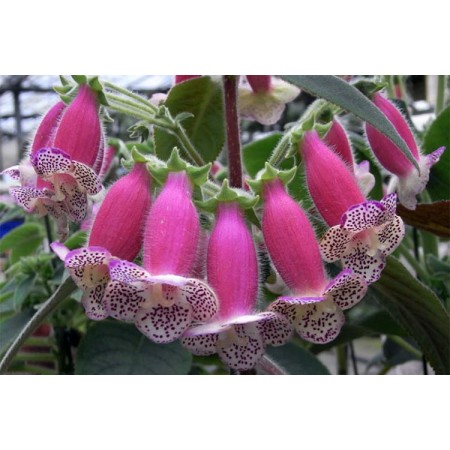Growing Corelia

Koleria is a charming exotic plant native to Central America. In Russia, this representative of the flora is not yet very common, although it is a charming version of the indoor flower, capable of growing up to 50 centimeters high. In this article, we will answer all questions regarding the creation of optimal conditions in the premises where it is planned to grow colors.
Lighting and air temperature
Koleriya will feel best in well-lit, large rooms where the air temperature is stably warm. It does not tolerate sudden temperature changes, so with the onset of winter cold, you should ventilate the room as rarely as possible. If this is difficult, then while airing, the container with the color moves to other rooms.
For koleriy it is best to provide a place on the windowsills, which are well lit (west and east side of the house). True, curtains should be present on them, if the windows face the south side - direct sunlight is disastrous for any flower.
As for the air temperature, then for a plant the optimal indicator would be 20-25 degrees of heat. For the winter period, when the collieria needs to gain strength before the next flowering season, it is necessary to slightly lower the temperature in the room to 18 degrees.
Humidity and watering
Koleriya favorably with high humidity in the air. Young flowers need a lot of liquid, so if your home air is not saturated with moisture up to 60-70%, you should place additional containers with water next to the pot. Constant spraying of a flower with a warm liquid purified from impurities will not be superfluous. Remember that you do not need to spray the leaves of the coloration, but its lower part - the moisture left on the leaves can turn into brown spots of rot, which is almost impossible to get rid of.
With the onset of spring and until mid-autumn, water should be constantly watered at the moment the earthen lump begins to dry. The closer to winter, the less moisture should be applied to the soil, and starting in December, the amount of fluid used will be reduced to a minimum.
Transfer
As soon as the roots of Corelia cover an earthen lump, the flower should be moved to a flowerpot, which will be slightly larger than the previous one. The most favorable period for this is spring, while the new flowerpot should be wide, but not too deep.
For transplantation, a mixture of turf, peat, deciduous land and sand is used as soil. As a natural drainage layer, you can use small pieces of coal, which will absorb excess moisture, preventing the flower from decaying.